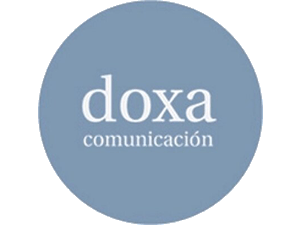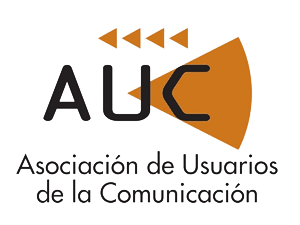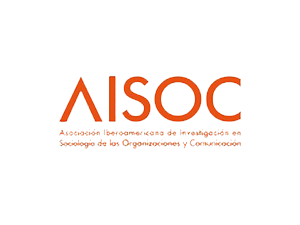Resumen
El objetivo de esta investigación es analizar el impacto del ciberacoso en el comportamiento online de los adolescentes. Las preguntas que han guiado la investigación son las siguientes: ¿Cuáles son los principales riesgos de la digitalización de los adolescentes? ¿Hay diferencias de género en el perfil de agresores y víctimas? ¿Hay diferentes formas de ciberagresión hacia los chicos que hacia los chicos? ¿Las experiencias de ciberviolencia tienen consecuencias diferentes en el comportamiento online de los y las adolescentes?
Las hipótesis que se tratan de verificar son: a) Las experiencias de riesgo en la red de chicos y chicas son distintas y; b) las mujeres se sienten más vulnerables ante los ataques online.
Se realizaron dos grupos de discusión, uno masculino y otro femenino, de diez participantes cada uno de edades comprendidas entre los 15 y los 18 años. Para el desarrollo de los grupos el equipo investigador elaboró una guía de discusión basada en los objetivos.
Los participantes en los grupos fueron captados de manera profesional y se ha garantizado la idoneidad de la muestra a través del SACC, el Sistema ANEIMO de Calidad de las Captaciones. Dicho sistema garantiza que las personas que participan en los estudios cualitativos de cualquier empresa asociada a ANEIMO cumplen el requisito de no haber participado en otro proyecto de similares características de cualquiera de dichas empresas, en un tiempo mínimo predeterminado.
Los criterios de selección de los participantes fueron 3: la edad, el 50% de los menores tenían entre 15 y 16 años, y el otro 50% entre 17 y 18 años en la fecha del desarrollo del grupo de discusión; todos los participantes debían tener cuentas activas de redes sociales; y todos los participantes tenían que usarlas diariamente y generar contenido (publicar, comentar, compartir, subir fotos).
Los grupos tuvieron una duración de 100 minutos. Fueron moderados por un experto y contaron con dos anotadores. Las sesiones se grabaron en audio y vídeo, se transcribieron y analizaron.
Los resultados más significativos son que el ciberacoso es una práctica extendida en las redes sociales y que a pesar de que no hay diferencias en el acceso a la red y en las habilidades digitales entre chicos y chicas, las experiencias de ciberacoso impactan más en el comportamiento online de las adolescentes. Ellas, ante el miedo a ser agredidas digitalmente, establecen estrategias de prevención y autocensura que limitan su libertad en el uso de Internet. Este estudio destaca la necesidad de potenciar una alfabetización mediática que sensibilice sobre el daño que ocasiona el ciberacoso, reduzca las formas y prevalencia de estos abusos y refuerce la confianza de las chicas para que puedan expresarse con libertad y sin miedo en el espacio online.
Palabras Clave / Adolescentes / Ciberacoso / Género / Internet / Jóvenes / Redes Sociales
Abstract
The purpose of this research is to analyse the impact of cyberbullying on the online behaviour of adolescents. The questions that have guided the research are the following: What are the main risks involved in the digitisation of teenagers? Are there gender differences in the profiles of perpetrators and victims? What are the differences between boys and girls in terms of the various forms of cyber-aggression? Do these experiences of cyber-violence have diverse consequences for adolescent online behaviour?
The hypotheses to be verified are the following: a) the risky online experiences of boys and girls are different, and in the case of girls, such risks have negative consequences for their use of the Internet; b) females feel more vulnerable to online attacks.
The data were analysed in depth using a qualitative study. The sample universe is composed of adolescents in Madrid between 15 and 18 years of age. The sample consists of 20 minors; 10 boys and 10 girls. For the groups, the research team prepared a discussion guide based on the objectives.
The participants in the groups were selected in a professional way and the adequacy of the sample was guaranteed through SACC, the ANEIMO Quality Recruitment System. This system guarantees that the people who participate in qualitative studies of any company associated with ANEIMO fulfil the requisite of not having participated in another project of similar characteristics with any of these companies within a pre-set, minimum period of time.
Selection criteria: 1. All the minors were either between 15 and 16 years of age, or between 17 and 18 years of age, on the date when the focus groups were carried out, without exception, and there were 50% in each group. 2. All participants have active social media accounts (e.g. Facebook, Twitter, Instagram, Snapchat, WhatsApp, etc.). 3. All the participants use social media on a daily basis and generate content (posting, commenting, sharing, and uploading photos).
The focus groups lasted around 100 minutes. They were moderated by an expert, and there were two note takers. The sessions were recorded in audio and video, transcribed, and analysed.
The most significant results show that cyberbullying is a widespread practice on social networks, and although differences have not been detected with regard to Internet access and digital skills, cyberbullying has a different impact on the online behaviour of girls, and it places them in a position of greater vulnerability. Girls feel less protected, which leads them to impose prevention and self-censorship strategies. The result is a limited ability to participate online. This study highlights the need to promote media literacy that will raise awareness about the harm caused by cyberbullying, reduce the forms and prevalence of this abuse, and reinforce female trust in the Internet.
Keywords / Adolescents / Ciberbullying / Gender / Social networks / The Internet / Young People
FIRMANTES
| Nombre | Adscripción | Procedencia |
|---|---|---|
| Rebeca Suárez-Álvarez | Universidad Rey Juan Carlos | Madrid |
| Tamara Vázquez-Barrio | Universidad CEU San Pablo | Madrid |
| Teresa Torrecillas Lacave | Universidad de Loyola | Sevilla |



















